What is the best way to combat invasive species?
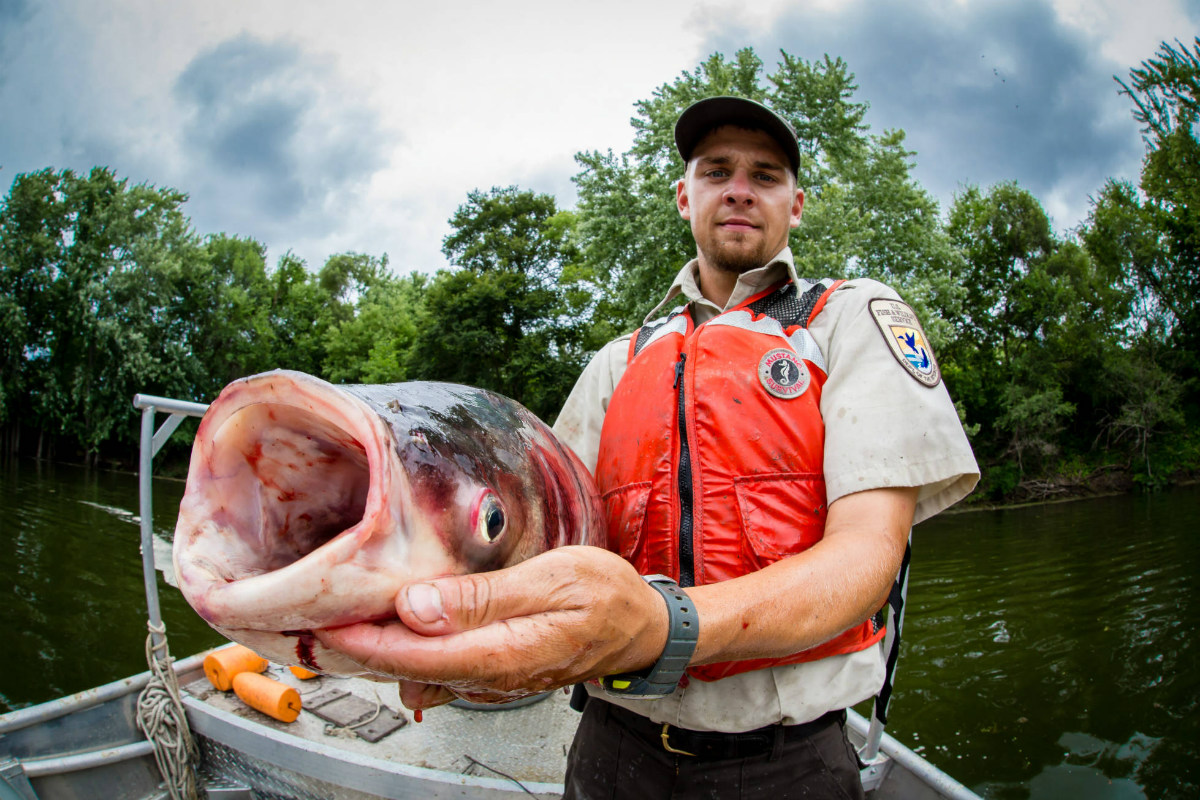
Some are sharp, some are spotted and some are slithery, only all invasive species are bad for public lands. Invasive species are nonnative organisms whose introduction to a particular ecosystem can cause economic or environmental damage, or harm to homo, beast, or constitute wellness.
Some nonnative species don't crusade damage (They're not "invasive"), but those that practice tin can cost billions in harm and disrupt an surround's natural remainder.
No matter where they came from, how they got here or what damage they cause, invasive species are a serious concern for all who protect and preserve America's public lands and waters.
Invasive Mussels
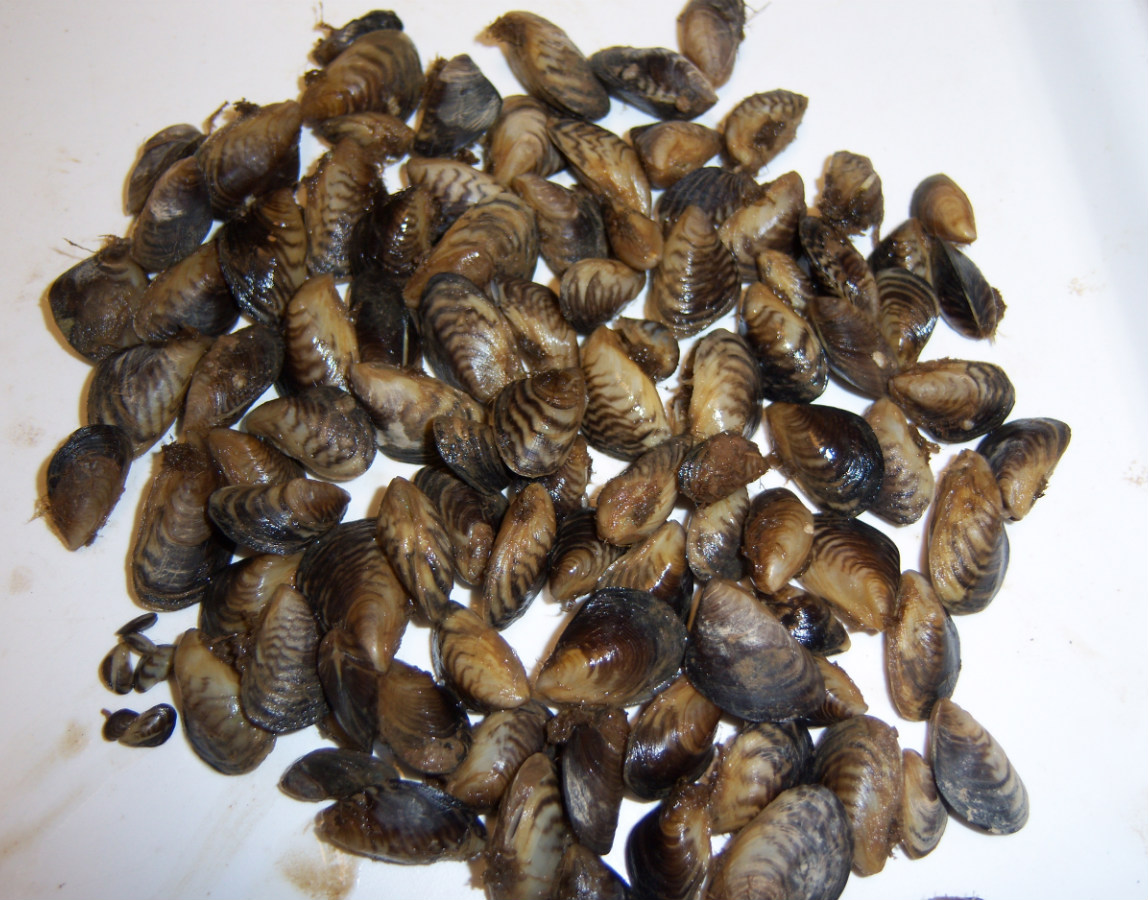
Quagga and zebra mussels are invasive species from Eurasia's Caspian Sea. These tiny mollusks reproduce chop-chop and attach to surfaces such as pipes, lake bottoms, docks, and intermission walls, forming a chaff of shells. Infestations in dams and h2o treatment facilities can impact the delivery of water and ability. Large colonies in lakes and waterways affect freshwater ecosystems, leading to harmful effects on native and endangered species, including recreational game fish. Mussel infestations may impact recreation in other ways, from abrupt beat fragments scattered over beaches to increased requirements and price for boat inspection and decontamination.
What are we doing to address invasive mussels?
Since their discovery in the Peachy Lakes in the 1980s, Interior's bureaus and partners have worked to prevent, incorporate and control invasive mussels. Efforts to limit their spread include:
- Watercraft inspection and decontamination
- Monitoring
- Rapid response
- Public didactics
- Research on detection and command measures
As of 2019, through collaboration with the Western Governors' Association and federal, state and tribal agencies, we've besides led numerous activities to protect western waters from the spread of invasive mussels.
Get Involved
Invasive mussels primarily spread by hitching rides on boats and other watercraft. Preventing the spread of invasive mussels starts with you! Recall to Make clean, Drain and Dry your watercraft after leaving the water. With your aid, we tin protect the nation's waterways and wild fauna.
Rapid ʻŌhiʻa Death
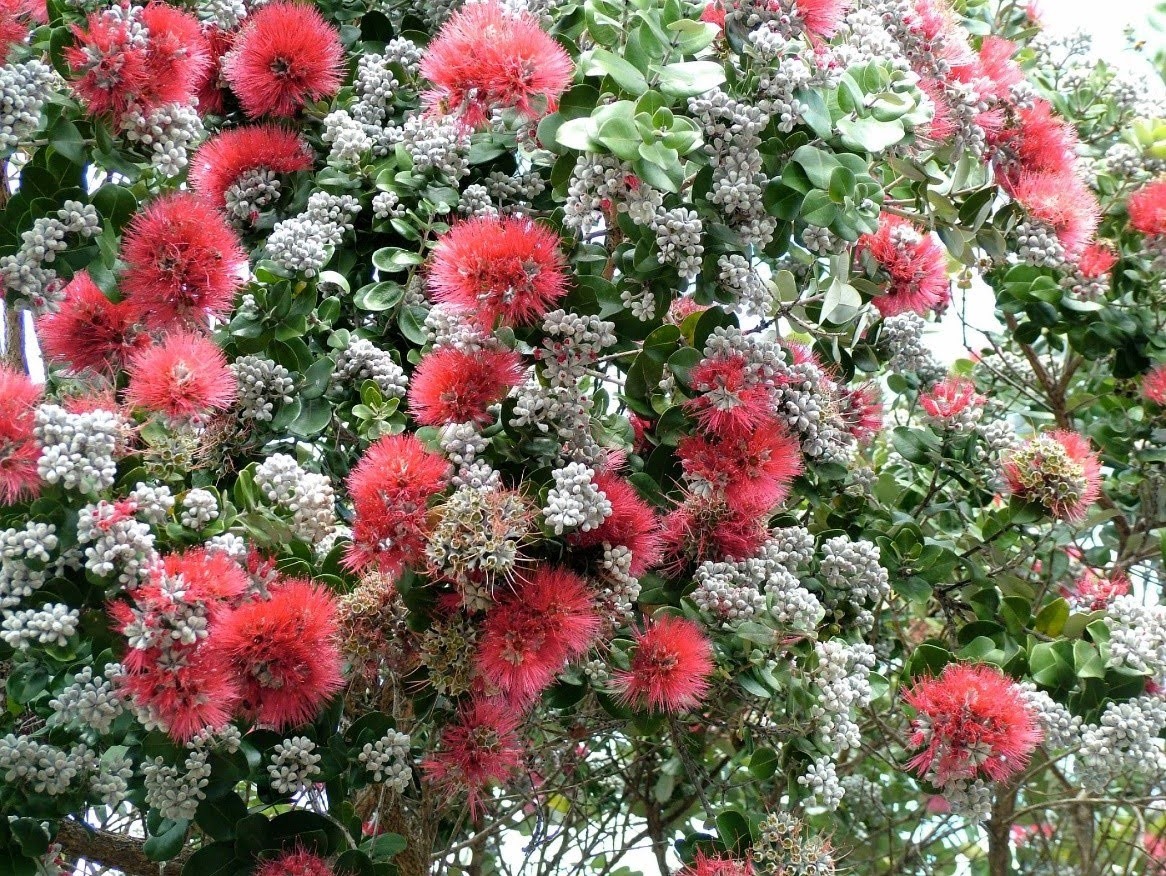
ʻŌhiʻa -- the most arable native tree in Hawai'i -- is both culturally pregnant and ecologically valuable. Sadly, ʻŌhiʻa are now threatened by 2 invasive fungal pathogens that cause Rapid ʻŌhiʻa Death (ROD), a serious threat to native forests in the Hawaiian Islands. Unfortunately, the future of the ʻŌhiʻa tree is in doubtfulness. Hundreds of thousands of ʻōhiʻa have already died due to this fast-acting affliction.
What are we doing to address Rapid ʻŌhiʻa Death?
Researchers are developing and refining techniques to quickly observe the presence and spread of ROD, while also addressing management challenges posed past this threat. The Office of Native Hawaiian Relations has sponsored the "'Ōhiʻa Challenge," a competition to help accost the issue.
Go Involved
Whether living in or visiting the Hawaiian Islands, be enlightened of ROD and follow biosecurity protocols that are in place to reduce the spread of this disease. Acquire more than about ROD and assist spread the word nigh the "'Ōhiʻa Challenge" so that nosotros tin can place and back up solutions.
Invasive Asian Bother: Bighead, Silvery, Black and Grass Carp
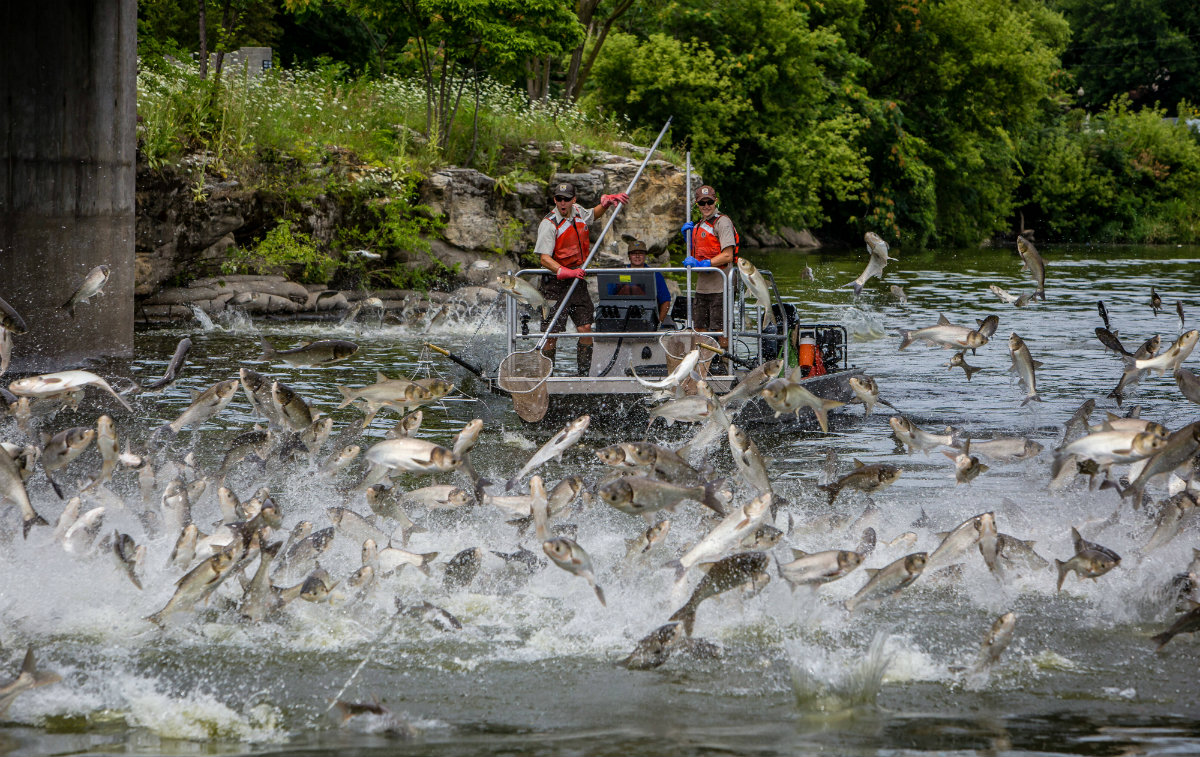
Finding their way into America'south rivers and lakes, Asian carp (bighead, silver, blackness and grass carp) threaten recreational, commercial and subsistence fisheries worth billions of dollars annually. These aquatic invaders accept over habitat and threaten native species, and affect recreational canoeing and other activities important to the livelihood of many communities.
What are we doing to address Asian bother infestation?
Interior experts provide key leadership, research and tactical assistance across the Peachy Lakes, Upper Mississippi River and Ohio River basins. Past developing the "Management and Command Plan for Bighead, Black, Grass, and Silverish Carps in the Usa," we tin use it as a national blueprint on the management of Asian carp. We've been developing critical new technologies to gainsay the threat posed by all Asian carp life stages (eggs, larvae, juveniles and adults) and working with natural resource managers to better early detection and rapid response activities.
Get Involved
Anybody tin can play a role in preventing the spread of Asian bother. Ways you lot can help:
- Larn to identify juvenile Asian carp
- Only employ wild-caught bait fish in waters where they came from
- Don't move live fish from one location to another
- Drain lake or river water from live wells and bilges earlier moving your watercraft
Finally, become an ambassador for your watershed and help others larn how to help!
Invasive Rodents
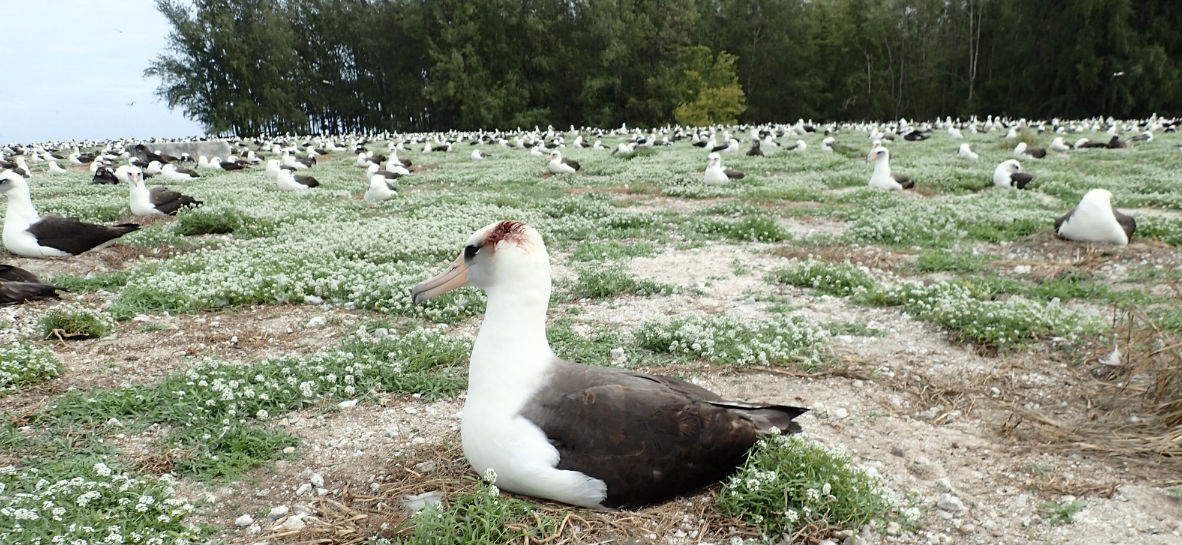
Invasive rodents on islands cause serious impacts to both native biodiversity and infrastructure. These harmful rodents, such as mice and rats, prey upon and compete with native wildlife, reducing native biodiversity and sometimes leading to the extinction of a species. Rodents impairment buildings by chewing through woods and insulation and gnawing on wiring which can trigger fires. Islands represent some of the greatest concentration of biodiversity, with island species oftentimes being evolutionarily distinctive. Unfortunately, these species are ofttimes highly vulnerable to novel disturbances, specially invasive rodents.
What are we doing to address invasive rodents on islands?
Interior works with a variety of partners on invasive rodent prevention, management and eradication. The main goal is to prevent rodents from reaching new islands. Where already plant, invasive rodents are trapped and killed to limit their touch on native species and infrastructure. Helicopter drops of rodenticide are used to completely eradicate rodents from islands. Successful rat eradications can pb to amazing native restoration stories. In 2011, rat eradication at Palmyra Atoll National Wildlife Refuge in the Pacific resulted in the native tree population increasing by 5,000 percent since rats were removed.
Get Involved
Whether you're traveling or supporting isle conservation, here are a few ways to assistance:
- Prevent invasive rodents from reaching new islands (i.e., using rat guards on boat mooring lines)
- Spread the word on how devastating rodents can exist for native species on islands
- Learn more well-nigh rat eradication and island restoration
Invasive Weeds
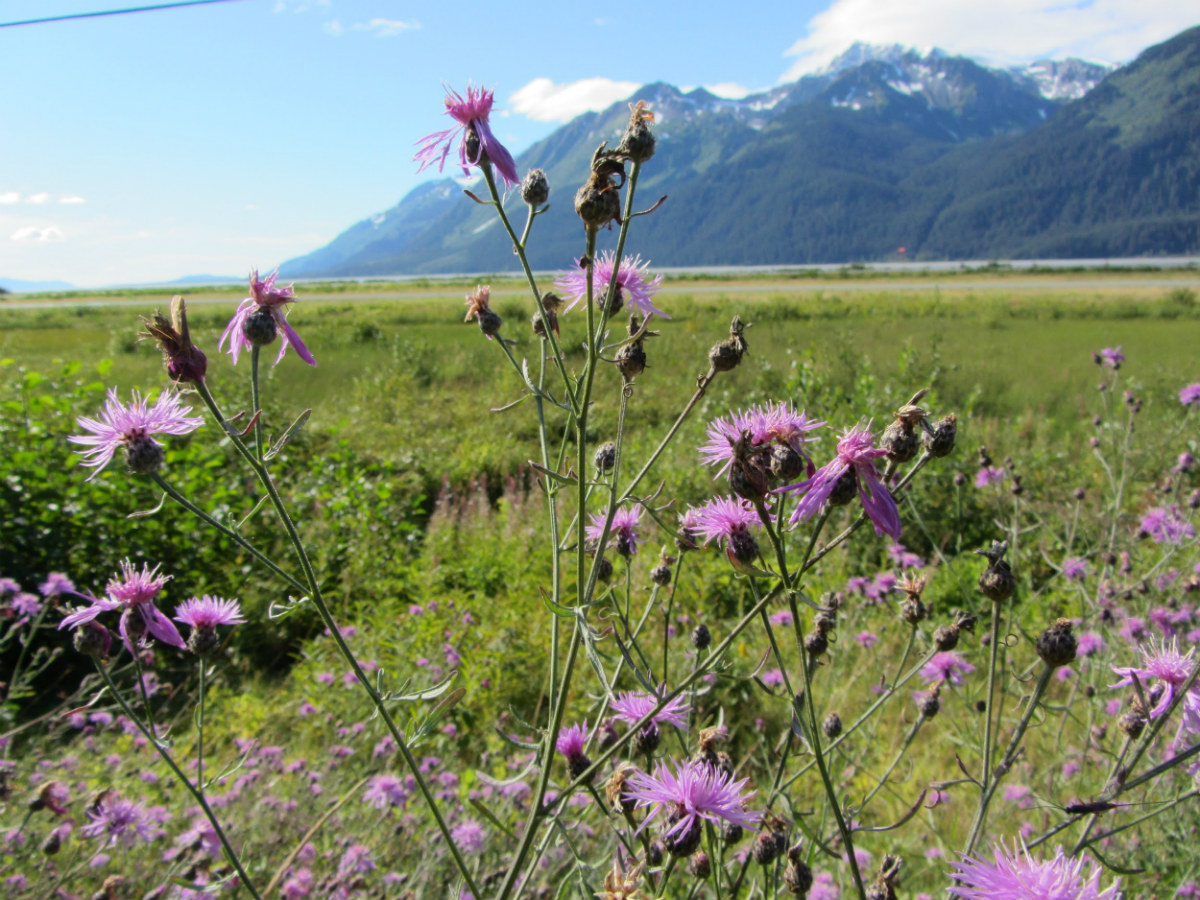
Today, noxious weeds and other invasive plant species infest more than than 79 one thousand thousand acres of public lands, an increase of 44 percent since 2000. This presents multiple impacts to threatened ecosystems. For example, featherlike brome (cheatgrass), infests 50 1000000 acres and provides fuel to wildfires that burn across increasingly larger areas. And in a devastating one-two punch, cheatgrass can quickly re-establish itself on burned lands, outcompeting native grasses and increasing the extent of infestation.
What are we doing to accost invasive weeds in the West?
Interior is responsible for preventing and controlling invasive weeds on the lands that nosotros manage. We prioritize invasive species projects -- protecting the most disquisitional resource -- such as protecting stream corridors or greater sage-grouse critical habitat. We partner with numerous partners, such as through Cooperative Weed Management Areas (CWMA'due south), that assistance with inventory, treatments, monitoring and other project work.
Get Involved
Prevention is key, and so identifying invasive plant species is crucial. Helping with early on detection, rapid response and public sensation is also important. Report weed infestations to your local Interior bureau field offices and be involved in a local CWMA.
Preventing the Adjacent Invasive Species
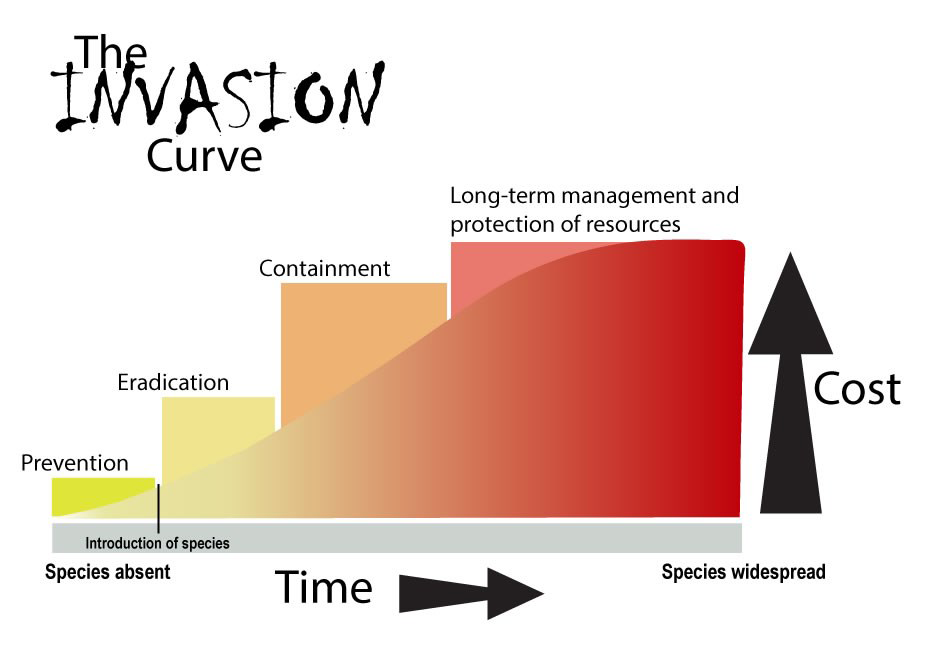
Once an invasive species becomes established, information technology is rarely possible to eradicate. The best fashion to avoid the harm that invasive species can cause is to prevent them from entering the land.
We use several ways to predict species at risk of becoming invasive and then preventing them from beingness imported. Past monitoring and inspecting wild animals imported into the United States at designated wildlife ports we can intercept problematic species.
Become Involved
You tin be involved in prevention in various ways. Please keep your pets secure and do not release them - under whatsoever circumstances. Animals similar exotic fish and reptiles can wreak havoc on native wild animals and habitat when they escape or are released. If you must surrender a pet because you tin can no longer care for it, do so responsibly -- see Don't Allow information technology Loose for pet rehoming options. Other excellent sources for how to prevent the spread of invasive species include:
- Stop Aquatic Hitchhikers!
- Clean Drain Dry
- Hungry Pests
- Don't Motion Firewood
- PlayCleanGo
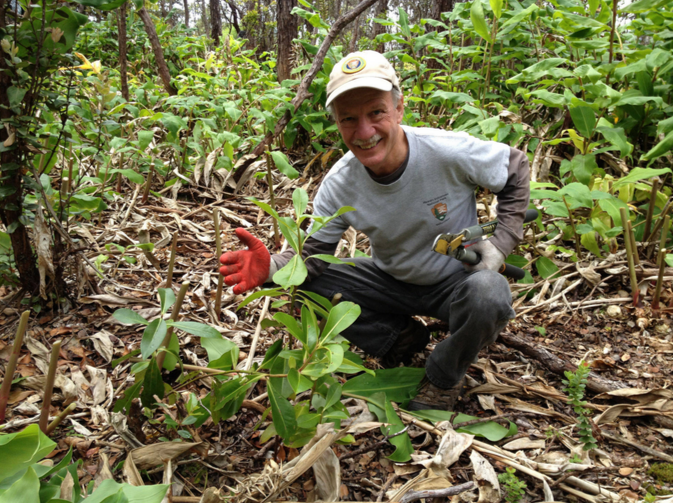
The Power of Partnerships
Invasive species may be widespread and vastly different, merely luckily so are the methods and teams protecting public lands. The Department of the Interior is forging strong partnerships with others to collectively accost the threat of invasive species. We can't practice it alone. Together, success is possible!
Source: https://www.doi.gov/blog/invasive-species-finding-solutions-stop-their-spread
0 Response to "What is the best way to combat invasive species?"
Post a Comment